Surreal Tales From Erdoğan’s Turkey
In Kenan Orhan’s collection I Am My Country, he examines a pervasive sense of estrangement in contemporary Turkish life for both citizens and exiles.
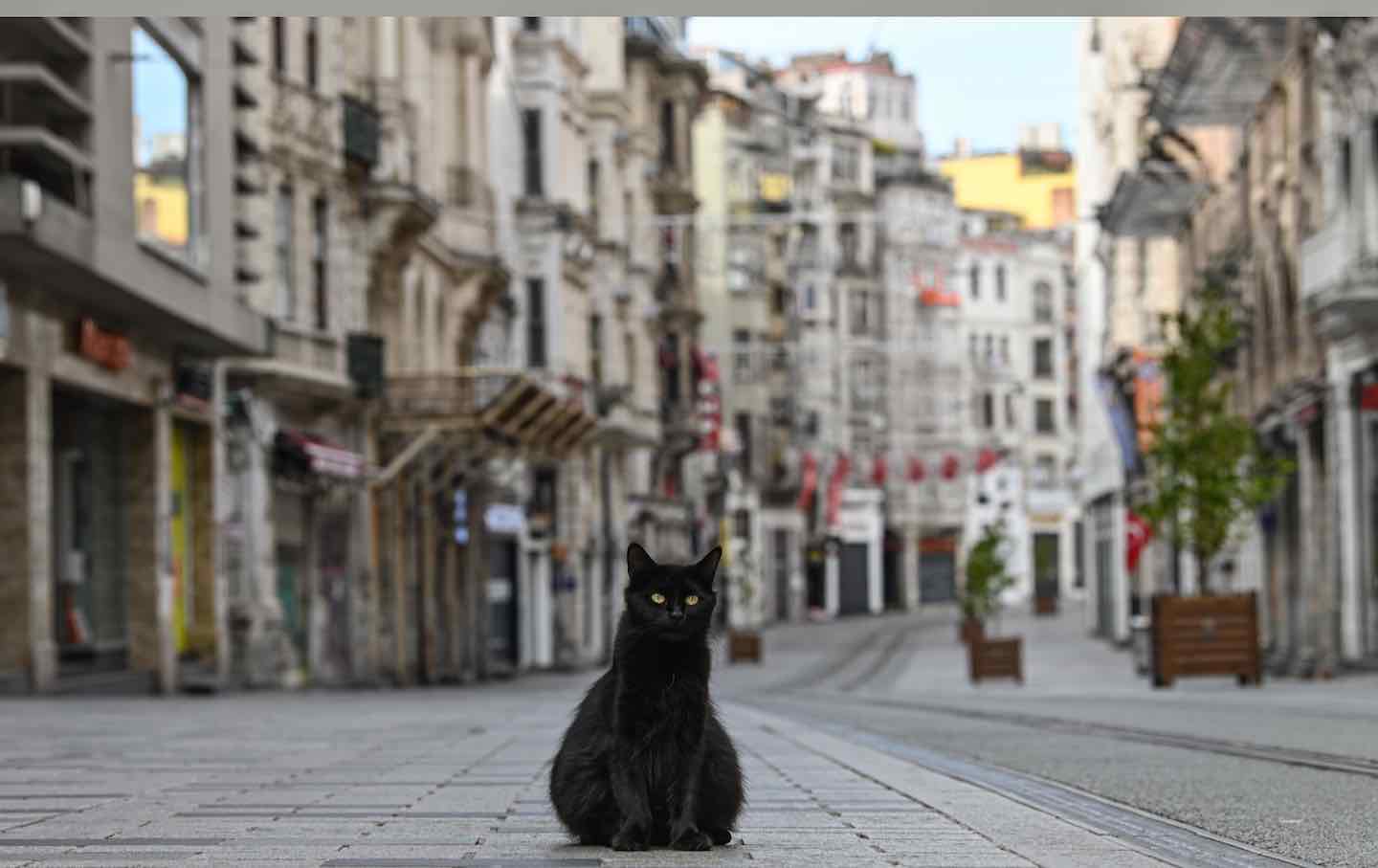
A girl from Kansas in the 20th century recalls a Polaroid photo from memory. It shows an elderly man perched on a bench, peeling oranges in her neighbor’s yard while the sun illuminates his belly, “skin tight over the fat.” In the present, the girl, who is Turkish American, is observing a street in Istanbul from an apartment window, gazing at a different man of advanced age. She expects to see the swing hanging from the tree beside their Kansas driveway, but there are no trees on that Istanbul street. “When I looked back at the old man, I was left watching our neighbor in Kansas, sitting on his porch shucking corn.” Not long after, this moment will itself become a memory, observed at a remove in the autumn of her life.
Books in review
I Am My Country: And Other Stories
Buy this bookSuch subtle shifts in temporality and skillful composites of past and present are typical of Kenan Orhan’s short stories, which take place between the Kansas-based author’s two homelands. The 10 stories collected in I Am My Country interrogate various aspects of Turkey, a nation whose political shift from democracy to dictatorship Orhan observed from a continent away. There are tales about preventable mine disasters, violently suppressed protest marches, the systematic dispossession of Kurdish citizens, and Turkish nationalist boys whose fragile masculinity Orhan dissects with surgical precision.
The title story offers a remembrance of Turkish things past. A jet-lagged woman and her two siblings are traveling in a cab as the Bosporus unfurls beside them, “silent as blood through the body.” The prose here is rich with the texture of Istanbul’s sights and sounds: Catching glimpses of street vendors unpacking their carts, the narrator—a tourist in her ancestral home—drinks in the city’s images through heavy eyes while “the masts of a thousand and one sailboats swayed slowly in the water.” Years later, after becoming a mother in Kansas, she won’t teach her first son Turkish and attempts to erase her Muslim past. Who can blame her? “After the World Trade Center, I will make it a point in my life not to mention the Prophet Muhammad,” she muses. “I will make it a point to vanish my spiritual heritage.” Turkey, in time, will recede to being a part of her brain that will remain “unrevisited”—until, of course, the telling of this tale. Like so many of the characters encountered here, the mother of the title story toggles between disparate realities: She is alienated from both her American life and her Turkish heritage. Characters in similarly dire straits connect these tales; Orhan’s debut is knitted together by Turkish people struggling to understand the places from which they remain estranged. Magical thinking defines their lives: These characters live under extreme conditions and resort to imagination to break free.
Orhan’s characters suffer from many different strains of guilt, class in particular. “Soma” is the harrowing portrait of a miner family from the story’s eponymous town, which suffered a mining disaster in 2014 that left 301 people dead. The protagonist, Izzet, is a swimmer whose brother, Mesut, works at the mine. Even as the 18-year-old Izzet prepares for a big race in the Dardanelles, Mesut’s life takes place mostly in the dark. “There are friends of his who go straight to bed after work, and most of the year they never see the sunlight,” Izzet reports. But he savors the aquatic side of life and the color azure and hopes to become an engineer: “They live twice as long, I hear. They have suntans.” Then a blast at the mine shatters these musings: A siren scream arises from a line of ambulances and the police chief’s car. Izzet can’t stay in Soma on the day of the tragedy, since he has a four-hour drive to his swim meet. On his way there, he listens “carefully for another explosion, promising myself that if it gets worse I will turn back, but the four hours don’t take long, not really, and I’m in Çanakkale, with a view of the Dardanelles from a square window in the hostel.”
This other, more affluent reality instantly captivates him, characterized by Speedos, an athletic couple from Liverpool, and a starter’s pistol they have difficulty hearing because of the wind. Diving in and swimming through the open water, Izzet gazes below him to see “men trapped now in a tunnel more than two thousand meters underground, and their lungs must be deflated balloons.” Feeling frustrated and guilty, he wonders what he will tell his children when they crawl onto his lap and ask why he is alive when his friends are not? Returning to Soma, he learns that 50 bodies have been hauled from the mine, but many more remain trapped underground. Recep Tayyip Erdoğan pays a visit, to the fury of locals who hoist banners and picket signs and shout “Murderer Erdoğan!” This is, of course, all based on real life: Turkey’s strongman infamously compared the mine disaster to those that happened in Victorian England and proclaimed such events part of “fate’s plan.” An aide even air-kicked a relative of a dead miner who dared to protest the strongman, an episode retold in “Soma.”
Orhan is also a student of the magical realist school: He invents birds that can talk with humans and carry buildings in the air, and he writes about an enchanted attic that can host all the discarded objects and humans of Turkey. Elif, the protagonist of “The Beyoğlu Municipality Waste Management Orchestra,” a story that debuted in The Paris Review in 2021, works at Istanbul’s waste management office. Spending her days in a truck traversing the cosmopolitan Pera neighborhood, she squeezes through tight alleys to pick up the refuse of the rich. Elif soon grows interested in divining the character of strangers from what they discard. One day, going through the bin of a composer, Elif finds a violin, takes home this “truly unbroken thing,” and begins curating a museum of discarded objects in her studio in an old Ottoman mansion. Crawling from beam to beam like an insect, she resolves to make the attic the house for her collection of stringed instruments.
Why are musicians discarding these instruments? The city’s orchestras and philharmonics have been ordered to compose and perform with “uniquely Turkish instruments.” Yet even ouds, sazes, and neys, all traditional instruments of Ottoman music, end up in the trash, leading Elif to wonder, “Was it an act specifically against the old composer or against composition itself?” After music, books too are banned. Now Istanbul’s morning air is filled with “hundreds, thousands of narrow columns of smoke creeping up through the seams of the city to submerge the sky in black.” The books have been banned by a presidential decree, though its last line exempts “all religious books, histories of religions, works by religious figures, spy thrillers, murder mysteries, and science and mathematics textbooks unless containing lines of poetry or else whole poems.” Citizens desperately burn their books to avoid the ire of prosecutors.
As more instruments, books, and even musicians find refuge there, Elif’s attic begins to resemble Anne Frank’s Amsterdam hideout. One day she watches three policemen get out of their van, “saunter over to the median shaded by a long row of Judas trees, and handcuff one of the trees.” Elif’s attic, meanwhile, has turned into “a concert hall/library/meeting house/pub/doctoral program,” featuring sculptors, farmers, baklava bakers, professors of literature, and a family of Syrians. Much to their dismay, Elif is picked up by the police one day, but not because of the attic: They find in her bag a banned tube of red paint that, they claim, isn’t Turkish red, “by which they meant it wasn’t the red of the flag, but instead a boring, lifeless red.” Sentenced to two years’ imprisonment because of her inability to “reduce my life along the guidelines of presidential decrees,” Elif ends up behind bars. There is no trial, since this is Erdoğan’s New Turkey, with its ceaseless “state of emergency” ensuring that the autocrat and his cronies can do whatever they like whenever they want.
Politics fuel each of Orhan’s subtly furious stories. “Three Parts in Which Emre Kills His Daughters,” for example, explores the legacy of 2013’s Gezi Protests and focuses on a father whose daughter is killed during a police crackdown. One of the most striking parts of the story is Orhan’s description of what made the events at Gezi Park so magnetic:
First the students heard, then the anti-government groups, then the academics and lawyers and journalists, then anyone with a son blown up in Syria, then anyone with a sibling in jail, then anyone who hated the Kurds, then anyone who supported the Kurds, then anyone against animal cruelty, then anyone with a grievance as small as a pothole unfixed in the neighborhood—they all heard that you could go to the square and expel in one grand catharsis every issue taken with the government, and one half of the city watched on their televisions the other half of the city shout and chant until their throats were red, and sing songs, and grill kebabs by bonfire as a form of protest.
The protests are at once violent and surreal, “out of a dream,” Orhan writes, and when the daughter dies after a police officer fires a tear gas canister at her head (“her skull caved in, red like a split watermelon in the sun”), her father, who has not paid enough attention to Erdoğan’s assault on the freedoms of his fellow citizens, transforms overnight. Her phantom will haunt him, quite literally, through the rest of the story—and, one presumes, until he breathes his last.
In describing Turkey’s reality, exaggeration and magical inventions are sometimes superfluous: A hyperrealist depiction of Erdoğan’s regime is sufficiently fantastical. Take “Mule Brigade,” a tale whose “heroes” are a squad of Turkish soldiers hunting “Kurdish mules” in eastern Anatolia. “Accessories to crime,” Sergeant Ali calls them. The team is normally involved in daily roundups of suspected terrorists. “We were good at it,” says the narrator, “no one saw those people again.” So why are they chasing mules now? The generals have ordered them to put a stop to smuggling, which has echoes of 2011’s Roboski massacre on Turkey’s border with Iraq, where Turkish fighter jets bombed a group of 40 Kurds who were smuggling goods on their mules; 34 Kurds and their animals died. For Sergeant Ali, an extreme nationalist squad member, such massacres are necessary “to protect the integrity of Turkey’s borders against separatists and terrorists.” The Kurdish villagers can see things more clearly: The squad is there “to starve them slowly, mule by mule, livelihood by livelihood.”
Popular
“swipe left below to view more authors”Swipe →The squad terrorizes a group of Kurdish villagers, picks on an older man, and takes him and his mule hostage. To accomplish this, their sergeant, Ali, thinks some showmanship will help, so he grabs the unfortunate old man by his sweater collar, points to his mule, “and shouts at the crowd of men in the coffeehouse that it is our mule now.” Then the soldiers begin freaking out: They think the Kurds are telephoning one another to warn about the squad. Behind their paranoia is the belief that every villager there is a “PKK terrorist” and that “in the badlands along the border, a mule is as good as a truck, and that every Kurd with a mule is a smuggler bringing contraband into Turkey, cheating the country out of billions of lira in tax revenue every year, and putting that money to use buying bullets and rifles for traitors and separatists.”
At the end of this unnerving tale, the squad prepares to execute a pack of mules that have sacks strapped to them. It is a moving scene, rendered from the point of view of a soldier who retains his conscience and silently suffers from guilt. These mules—317 of them—are carrying bootleg DVDs and other black-market items and are about to be machine-gunned. Yet small acts of defiance against the Turkish state matter, Orhan reminds us. And he wraps up his story with a dramatic vignette of a squad member who goes rogue and ends up riding a stolen little mule “for the mountains, for the border.”
These characters, trapped inside Turkey’s borders and subjected to the absurdities of an autocratic regime, all seek a way out. They reminded me of the characters in James Joyce’s debut, Dubliners (1914), who don’t always openly ponder national identity and the oppressiveness of Irish politics but allow us to do so while watching their mundane lives up close. The story that wraps up Orhan’s collection, “The Birdkeeper’s Moral,” offers a metonym for the travails of Turkey. Its protagonist, a man who can talk to birds, falls victim to the pogroms of September 1955, when Istanbul, that “ebullient city,” becomes a powder keg after the rise of government-organized hatred against Turkey’s Christians and Jews. Only birds can save the victims of nationalism, the persecuted man thinks, and, following his commands, they converge to carry a house, transporting it from a neighborhood being looted to one that is not, pulling it by thousands of ropes and holding it in the air—a show of the power of solidarity:
In the sky were flocks intermittently, larks and storks like arrows, sparrows like schools of fish, finches here and there flying up from the fires, escaping the soot and smoke as black dashes in the illuminating twilight. How easy it looked, how smooth, as if gravity were an afterthought, the breeze was the only truth for those with wings.
In today’s Turkey, such fantastical escape schemes are increasingly a part of daydreams. Istanbul’s birdsong, be it in the pages of this book or a dimmed corner of Gezi Park, reminds us of the possibility of flight.
Thank you for reading The Nation
We hope you enjoyed the story you just read, just one of the many incisive, deeply-reported articles we publish daily. Now more than ever, we need fearless journalism that shifts the needle on important issues, uncovers malfeasance and corruption, and uplifts voices and perspectives that often go unheard in mainstream media.
Throughout this critical election year and a time of media austerity and renewed campus activism and rising labor organizing, independent journalism that gets to the heart of the matter is more critical than ever before. Donate right now and help us hold the powerful accountable, shine a light on issues that would otherwise be swept under the rug, and build a more just and equitable future.
For nearly 160 years, The Nation has stood for truth, justice, and moral clarity. As a reader-supported publication, we are not beholden to the whims of advertisers or a corporate owner. But it does take financial resources to report on stories that may take weeks or months to properly investigate, thoroughly edit and fact-check articles, and get our stories into the hands of readers.
Donate today and stand with us for a better future. Thank you for being a supporter of independent journalism.
More from The Nation

The Rolling Stones Haven’t Missed a Beat The Rolling Stones Haven’t Missed a Beat
The world's greatest rock and roll band is on the road again. This time, they’ve got a new drummer.
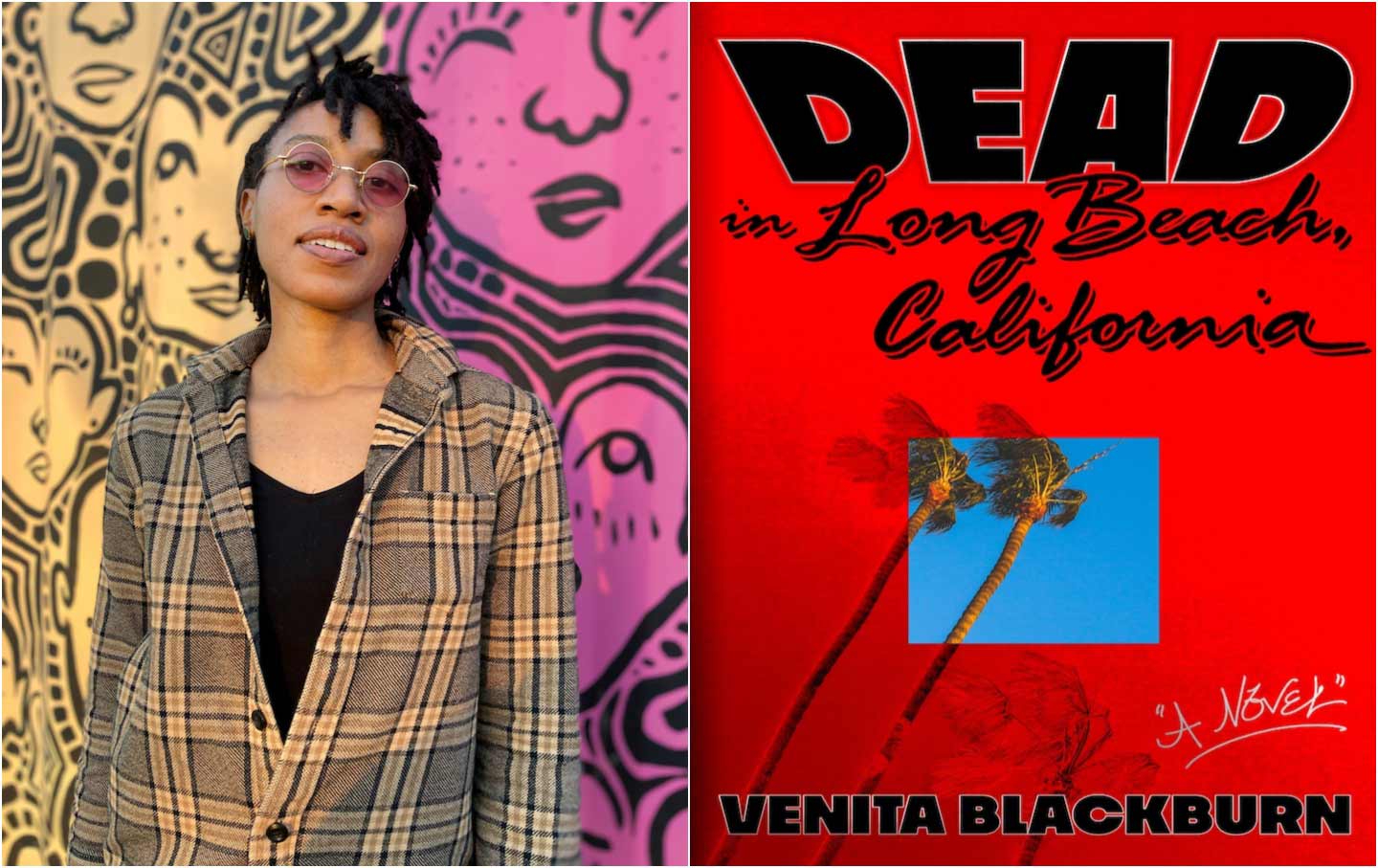
Venita Blackburn’s Stages of Grief Venita Blackburn’s Stages of Grief
In Dead in Long Beach, California, the novelist looks at how integral lying is to any story we tell about death.
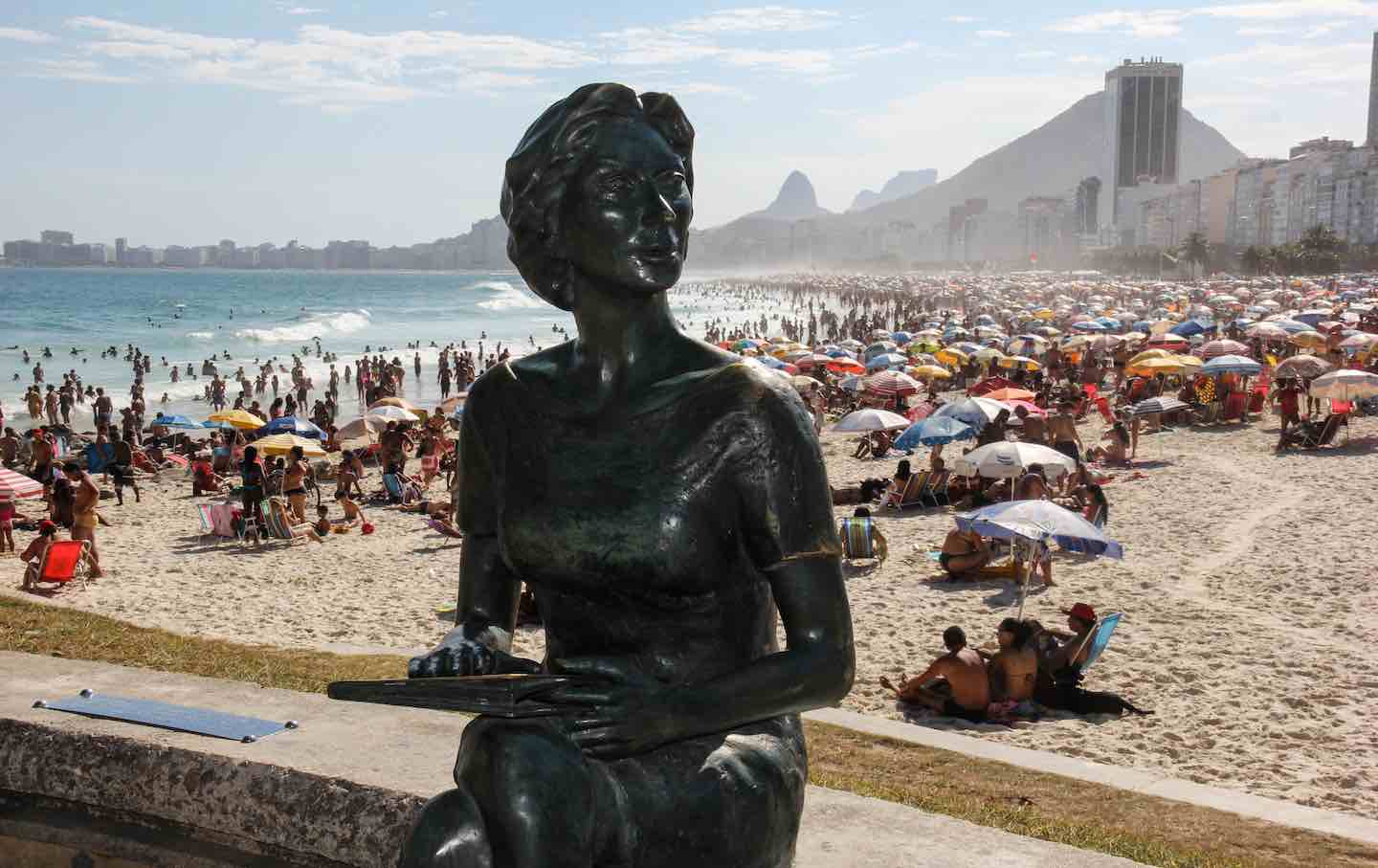
Clarice Lispector’s Cosmology Clarice Lispector’s Cosmology
To understand the philosophical dimensions of her fiction you must read her 1961 novel The Apple in the Dark.
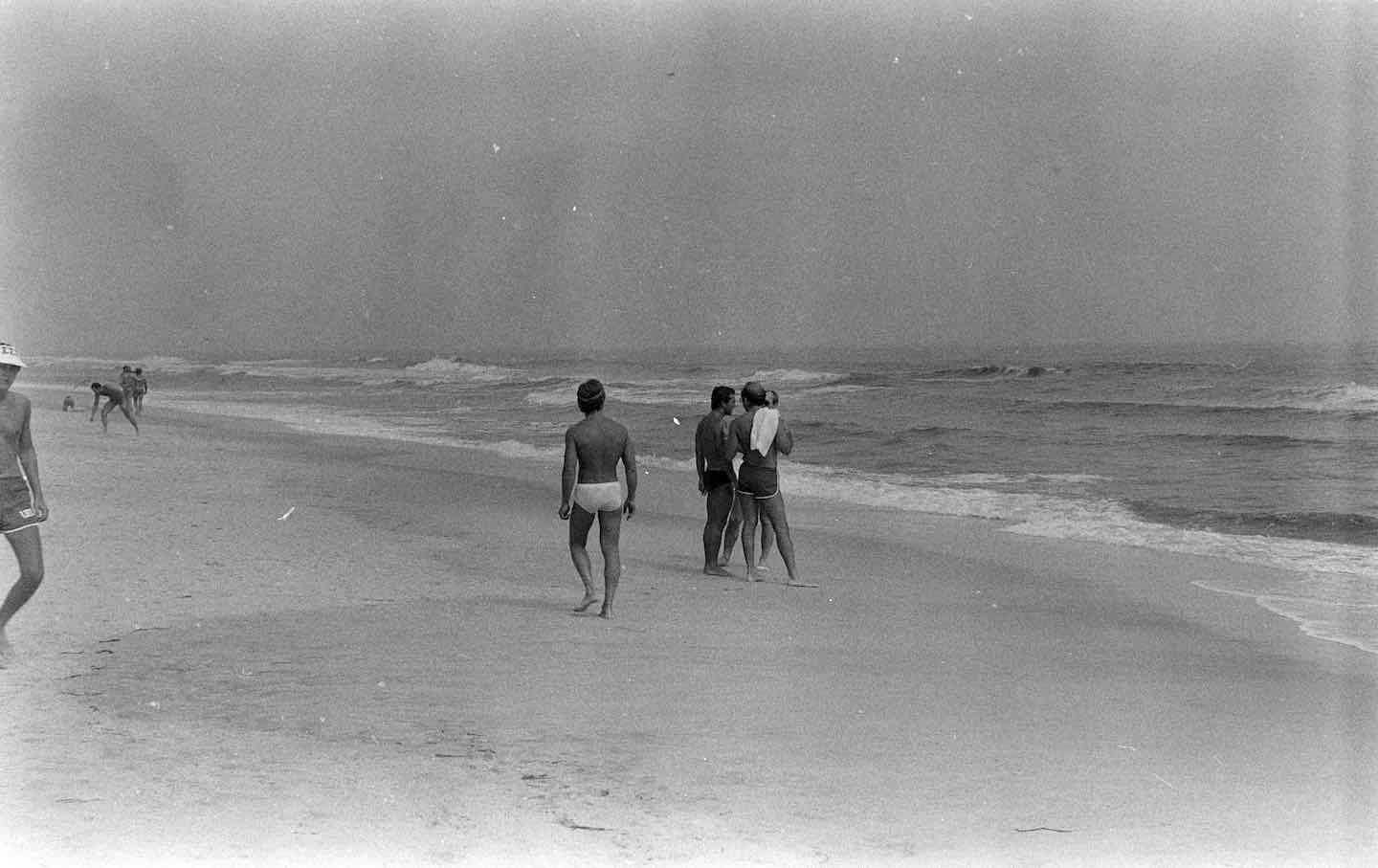
The Cruel Genius of Robert Plunket’s Gay Satires The Cruel Genius of Robert Plunket’s Gay Satires
His 1992 novel Love Junkie might be one of the tragicomic classics of the AIDS era.
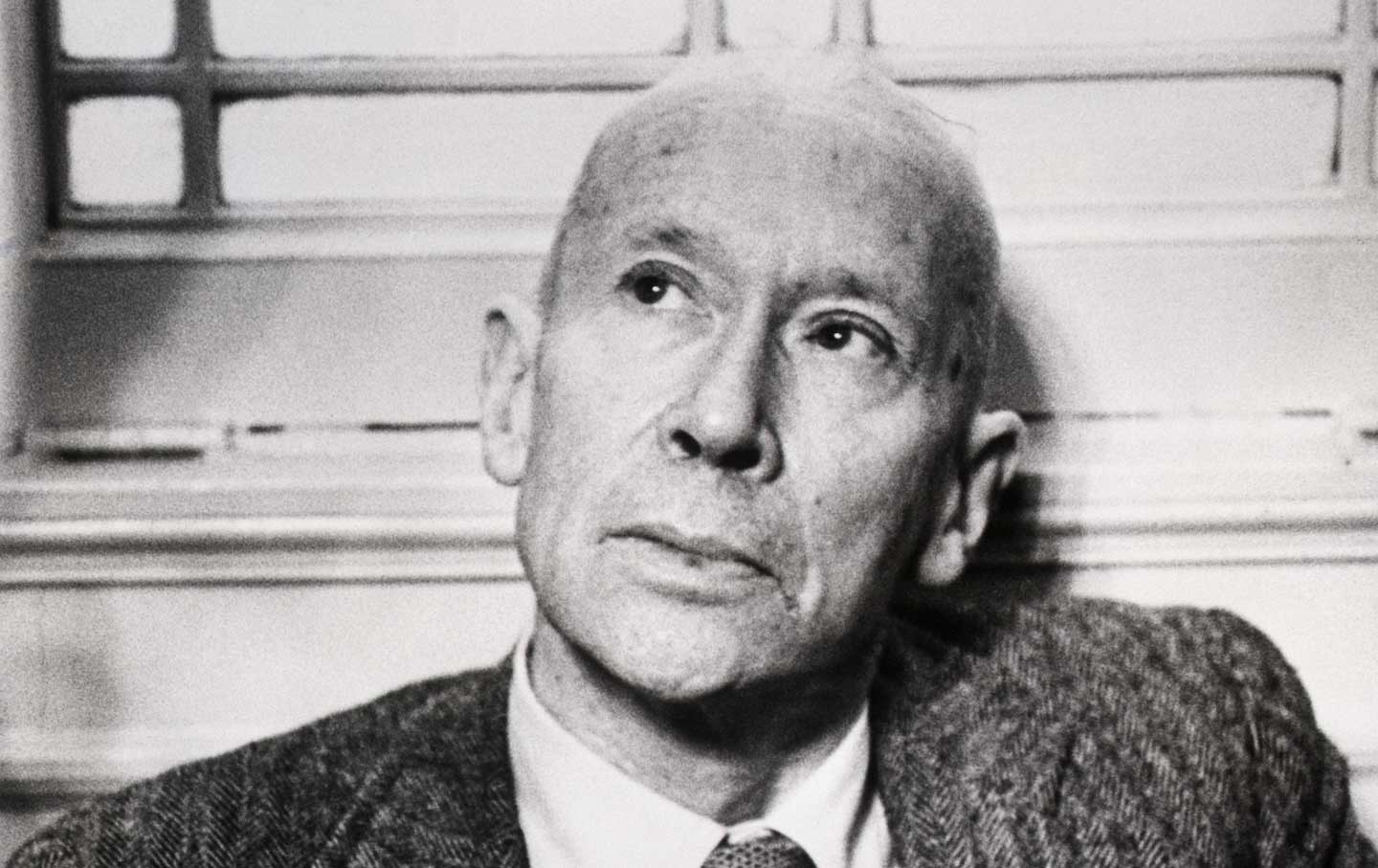
The Peculiar Legacy of E.E. Cummings The Peculiar Legacy of E.E. Cummings
Revisiting his first book, The Enormous Room, a reader can get a sense of everything appealing and appalling in his work.

The World’s Problems Explained in One Issue: Electricity The World’s Problems Explained in One Issue: Electricity
Brett Christophers’s account of the market-induced failure to transition to renewables is his latest entry in a series of books demystifying a multi-pronged global crisis.


